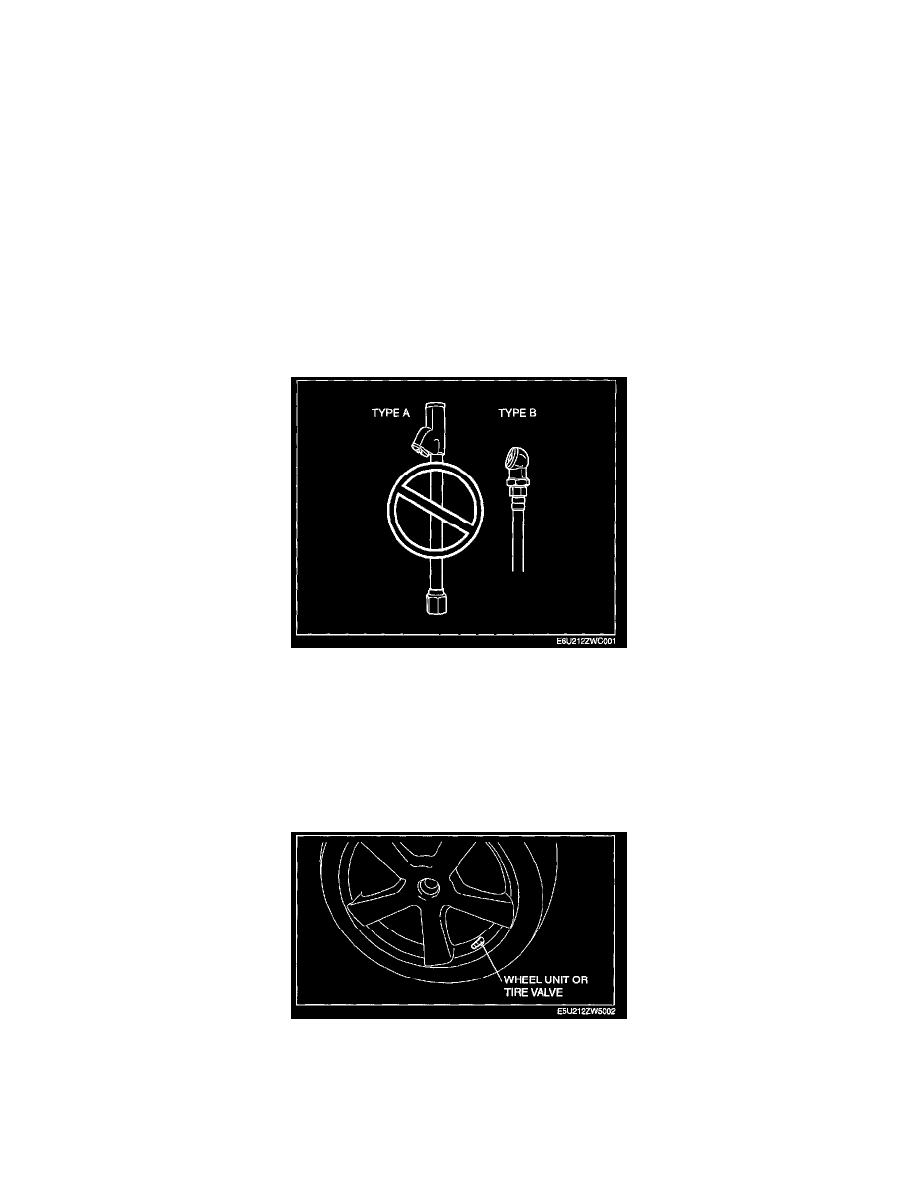MX-5 Miata L4-2.0L (2008)

Tires: Service and Repair
TIRE PRESSURE ADJUSTMENT (WITH TPMS)
1. Use of a digital gauge is recommended for accurate measurement of the air pressure.
2. Tire pressure lowers gradually as time passes. Due to this, monthly air pressure inspection is recommended.
3. Perform tire pressure adjustment before driving. (When tires are cold.)
^
Tire pressure will increase after driving because the internal temperature of the tire is high. If tire pressure is adjusted to specifications when
the internal temperature of the tire is high, tire pressure will decrease when the internal temperature of the tire decreases to the same level as
ambient temperature. If the tire pressure is lower than the lower-limit pressure, the TPMS warning light may illuminate.
^
Even though the air pressure is adjusted to specifications, the indicated air pressure may be higher than the specified value when the internal
temperature of the tire is higher than ambient temperature. (Example: Air pressure changes approx. 10 kPa (0.1 kgf/cm2, 1.5 psi) when the
temperature changes 10°C (50°F))
Caution:
^
In an area or a season with varying temperatures, tire pressure will change due to ambient temperature change. If the tire pressure is
lower than the lower-limit pressure due to low ambient temperature, the TPMS warning light may illuminate. Adjust the pressure
when the TPMS warning light illuminates.
^
Do not tilt or use excessive side force when checking air pressure or inflating the tire with air. Which can provide enough leverage to
easily bend or break the wheel unit.
^
To prevent damage to the valve area of the wheel unit or pressure loss during air pressure adjustment, use a type B tool with a round
end as shown in the figure, not a type A tool.
REPAIR AGENT REMOVAL
Caution:
^
Be careful not to spill the repair agent from inside of the tire.
1. Remove the flat tire from the vehicle, and let the air out of the tire.
2. Remove the wheel unit nut and push the remaining part of the wheel valve into the tire (with TPMS). Cut the tire valve by the root and push the
remaining part of the wheel into the tire (without TPMS).
